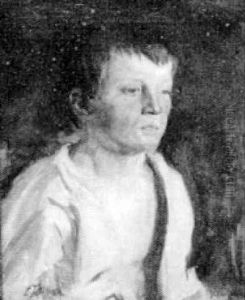Edmund Thomas Quinn Paintings
Edmund Thomas Quinn was an American sculptor born in 1868, known for his contributions to public monuments and portrait sculptures. His works, which often depicted historical figures and allegorical themes, were part of the Beaux-Arts movement that dominated American sculpture at the turn of the 20th century. Quinn's sculptures are characterized by their classical style, attention to detail, and expressive realism, a reflection of his training and the artistic influences of his time.
Quinn's early years were marked by a deep interest in art, leading him to pursue formal education in sculpture. He studied at the National Academy of Design in New York and later expanded his artistic education in Europe, a common practice among American artists of his era seeking to refine their skills and absorb European art and culture. His time in Europe, particularly in Paris and Italy, was influential in shaping his artistic style and philosophy. Upon returning to the United States, Quinn established himself in New York City, where he became an active member of the art community.
Throughout his career, Quinn received numerous commissions for public monuments, busts, and memorial sculptures, which remain his most enduring legacy. Among his notable works are the statues of Thomas Jefferson and Alexander Hamilton in New York, which showcase his ability to capture the essence and dignity of his subjects. Quinn's contribution to American sculpture was also evident in his involvement with the National Sculpture Society, where he played a significant role in promoting sculpture as a vital form of public art.
Quinn's work was not limited to public monuments; he also created smaller pieces, including portrait busts and allegorical figures, which were celebrated for their craftsmanship and expressive detail. His art was featured in several exhibitions throughout his career, earning him critical acclaim and solidifying his reputation as a leading American sculptor of his time.
Edmund Thomas Quinn's death in 1929 marked the end of a fruitful career, but his sculptures continue to be admired for their artistic merit and historical significance. His contributions to American sculpture, particularly in the realm of public monuments, have left a lasting impact on the landscape of American art, making him a notable figure in the history of American sculpture.



